
The Atikamekw of Opitciwan (French: Atikamekw d'Opitciwan) are an Atikamekw First Nation in Quebec, Canada. In 2016, it has a registered population of 2,937 members, [1] who live primarily on an Indian reserve, Obedjiwan 28, located in Mauricie. [2]

The Atikamekw of Opitciwan (French: Atikamekw d'Opitciwan) are an Atikamekw First Nation in Quebec, Canada. In 2016, it has a registered population of 2,937 members, [1] who live primarily on an Indian reserve, Obedjiwan 28, located in Mauricie. [2]

The Cree are a North American Indigenous people. They live primarily in Canada, where they form one of the country's largest First Nations.

The Chipewyan are a Dene Indigenous Canadian people of the Athabaskan language family, whose ancestors are identified with the Taltheilei Shale archaeological tradition. They are part of the Northern Athabascan group of peoples, and come from what is now Western Canada.
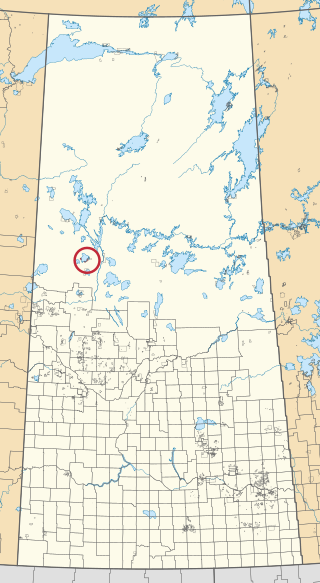
Canoe Lake 165 is an Indian reserve of the Canoe Lake Cree First Nation in the boreal forest of northern Saskatchewan, Canada. Its location is on Canoe Lake approximately thirty miles west of Beauval, within the ancient hunting grounds of the Woodland Cree. In the 2016 Canadian Census, it recorded a population of 912 living in 250 of its 273 total private dwellings. In the same year, its Community Well-Being index was calculated at 53 of 100, compared to 58.4 for the average First Nations community and 77.5 for the average non-Indigenous community. The reserve includes the settlement of Canoe Narrows. The name of the reserve and the settlement in Cree is nêhiyaw-wapâsihk ᓀᐦᐃᔭᐤ ᐘᐹᓯᕽ.

The Atikamekw are the Indigenous inhabitants of the subnational country or territory they call Nitaskinan, in the upper Saint-Maurice River valley of Quebec, Canada. Their current population is around 8,000. One of the main communities is Manawan, about 160 kilometres (99 mi) northeast of Montreal. They have a tradition of agriculture as well as fishing, hunting and gathering. They have close traditional ties with the Innu people, who were their historical allies against the Inuit.

Wemotaci is a First Nations reserve on the north shore of the Saint-Maurice River at the mouth of the Manouane River in the Mauricie region of Quebec, Canada. Together with the Obedjiwan and the Coucoucache Indian Reserve No. 24, it belongs to the Atikamekw First Nation.
Coucoucache was a tiny First Nation reserve, in Cloutier Township, on the north shore of Reservoir Blanc on the Saint-Maurice River in the Mauricie region of Quebec, Canada. It belonged to the Atikamekw First Nation of Wemotaci but had no permanent population in recent decades.
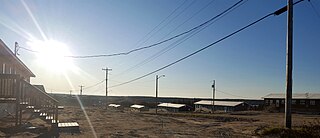
Marcel Colomb First Nation (MCFN), Band #328, is a First Nations Band of approximately 449 Registered Swampy Cree and Rocky Cree (Asinīskāwiyiniwak) located in the area of Lynn Lake, Manitoba, Canada. Marcel Colomb First Nation is affiliated with the Swampy Cree Tribal Council.
Pelican Lake First Nation is a member of the Federation of Saskatchewan First Nations, the body that represents 74 First Nations in Saskatchewan.
Gambler First Nation is an Ojibway First Nations community in Manitoba. With a population of 334 members, it is one of the smallest indigenous communities in Manitoba.
Wemotaci Atikamekw Council is the band council of the Atikamekw of Wemotaci, Quebec. In 2016, the band has a registered population of 1,918 members. It has two Indian reserves: Coucoucache 24A and the community of Wemotaci where it is headquartered.

Atikamekw of Manawan are an Atikamekw First Nation in Quebec, Canada. They live primarily in the Atikamekw community of Manawan, an Indian reserve located in Lanaudière. In 2016, the band has a registered population of 2,892 members. It is governed by the Manawan Atikamekw Council and is affiliated with the Conseil de la Nation Atikamekw, the Atikamekw tribal council.
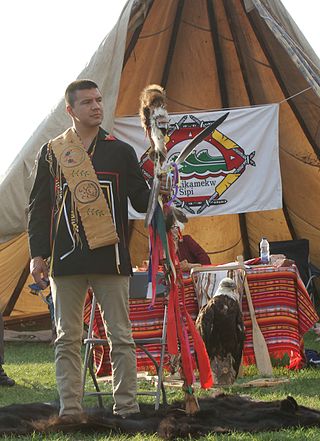
The Conseil de la Nation Atikamekw (CNA), officially named Atikamekw Sipi - Conseil de la Nation Atikamekw, is a tribal council in Quebec, Canada. It is composed of the three Atikamekw bands: Manawan, Opitciwan and Wemotaci. Together, the three bands have a total registered population of 7,747 members in 2016. It is headquartered in La Tuque, Quebec. The role of the CNA is to officially represent all Atikamekw Nehirowisiw. In September 2014, the CNA declared its sovereignty on its ancestral territory, the Nitaskinan, covering approximately 80,000 km2.

Innus of Ekuanitshit are a First Nation band in Quebec, Canada. They live primarily in the Indian reserve of Mingan on the north coast of the St Lawrence River. As of October 2019, the band had a registered population of 677 members.
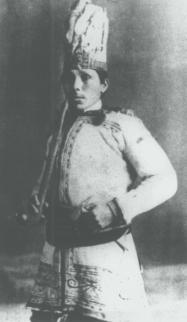
Mohawks of Kanesatake or Kanehsatà:kehró:non are a Mohawk First Nation in Quebec, Canada. In 2016 the band has a registered population of 2,508 members. Their main reserve is Kanesatake Lands located 48 kilometres (30 mi) west of Montreal. They also share the uninhabited reserve of Doncaster 17 with the Mohawks of Kahnawá:ke for hunting and fishing.

Micmacs of Gesgapegiag are a Mi'gmaq First Nation in Quebec, Canada. They are based at Maria, Quebec on the Gaspé Peninsula and they have one Indian reserve, Gesgapegiag. In 2016 the band has a registered population of 1,501 members. The First Nation is part of the Mi'gmawei Mawiomi Secretariat.
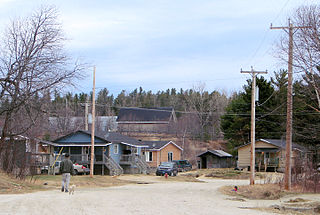
Algonquins of Barriere Lake are an Algonquin First Nation in Quebec, Canada. They primarily live on the Indian reserve of Rapid Lake in Outaouais. In 2017 the band had a registered population of 792 members. It is part of Algonquin Nation Programs and Services Secretariat.

The Pessamit Innu Band, which the official name is bande des Innus de Pessamit, is an Indian band of the Innu First Nations in Quebec, Canada. Its members primarily live on the Indian reserve of Pessamit in the Côte-Nord, the north shore of Saint Lawrence River, which is also the seat of the band. In 2017 it has a registered population of 3,953 members. It is governened by a band council called Conseil des Innus de Pessamit and it is affiliated with the Mamuitun Tribal Council. The band was previously known as Bersimis and Betsiamites.
The Kitcisakik Anicinape Community, which the official name is communauté anicinape de Kitcisakik, is an Indian band of the Algonquin First Nations in Quebec, Canada. The majority of its members lives on the Indian settlement of Kitcisakik, also called Grand-Lac Victoria, located on the shore of the Grand lac Victoria on La Vérendrye Wildlife Reserve, where is also located the band council, the Conseil des Anicinapek de Kitcisakik. In 2017 the band had a registered population of 498 members.
Innu Takuaikan Uashat Mak Mani-Utenam is an Innu First Nations band government in Quebec, Canada. It is based in Sept-Îles in the Côte-Nord region on the North shore of the Saint Lawrence River. It owns two reserves: Maliotenam 27A and Uashat 27 located at both ends of Sept-Îles. It is governed by a band council and is a member of the Mamuitun Tribal Council.
Indigenous specific land claims in Canada, also called specific claims, are long-standing land claims made by First Nations against the Government of Canada pertaining to Canada's legal obligations to indigenous communities.